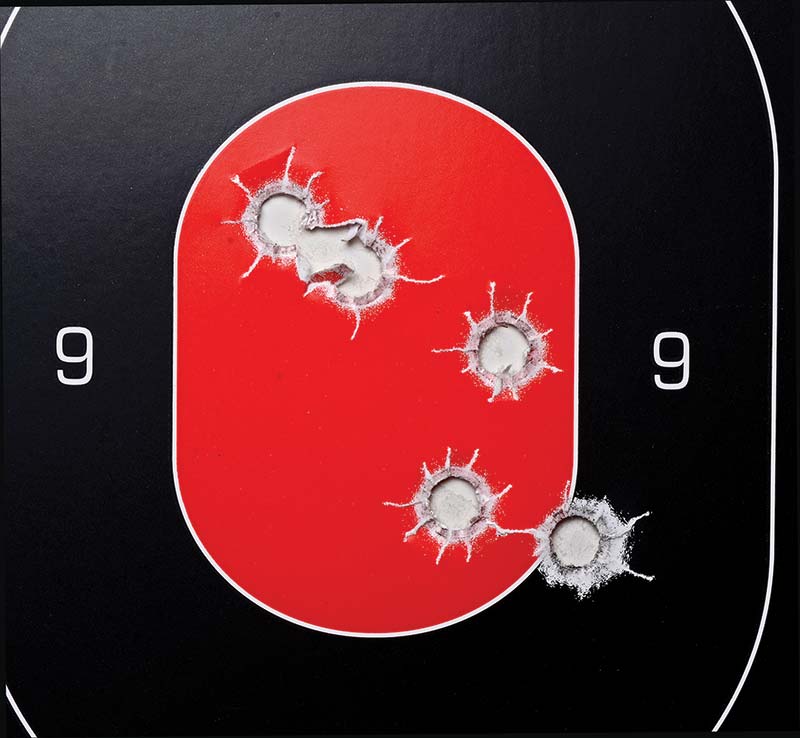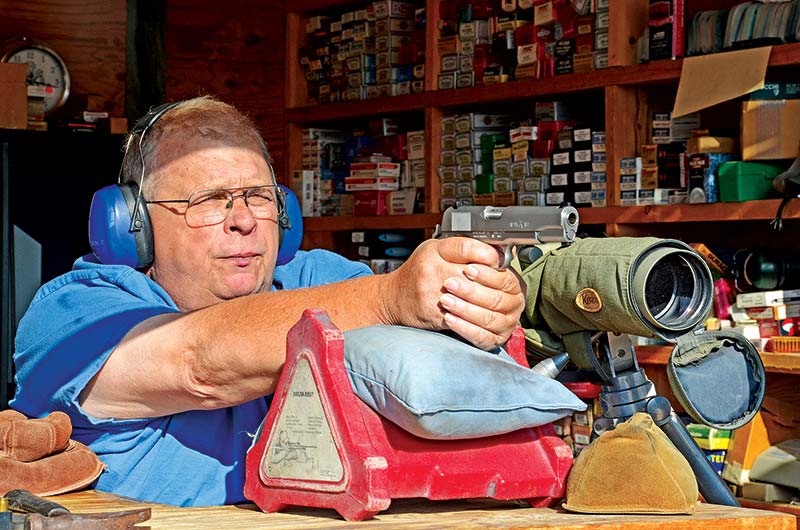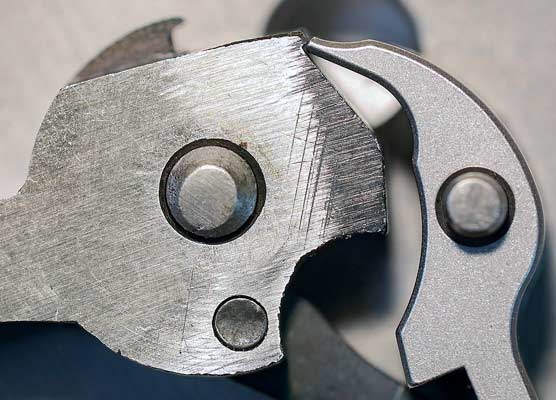How We Shoot:
Is One-Handed Shooting Dead?
To become a proficient handgun shot Duke says to shoot slowly, use small targets and a good trigger press. It’s also very satisfying to see the hits doing it “the hard way”!
The vast majority of handgun shooting competitions nowadays are geared to speed. That’s understandable. It’s fun to do and fun to watch. There’s movement, steel targets ringing from hits, and/or reactive targets. With perhaps hundreds of people wishing to participate, a match must keep rolling. Each competitor’s allotment of shooting time is limited if the event is going to finish up by day’s end. Also there must be a way to quantify matters for scoring. Usually that’s actual time the shooter used for the string of shots minus penalties for missing, etc.
Speed shooting events necessitate targets are mostly steel, large in size and placed close to the firing line. The problem I see is a hit on a two foot square piece of steel say in the lower left hand corner at 10 paces counts just as much as a dead-center strike. In other words speed shooting negates precision shooting. And that’s too bad because the primary focus on shooting a handgun should be to direct the first shot dead center on target.
Don’t get me wrong at this point. I’ve done a bit of speed shooting in competition in my 50-plus years as a handgunner and I’ve loved it. However, when I began at age 17 I’d never heard of competitions based on speed. The elderly gents — they were much younger than I am now, by the way — at the local gun club were bullseye target shooters. They were aiming at about 6″ black circles on white paper at 25 and 50 yards. The idea was each shot was an individual one. Reacquiring only the front sight for fast follow up shots because the targets were mere yards away was unknown. In fact those older guys who let me participate with them sometimes set their handguns down between shots.
If your handgun will group like this at say 20 to 25 yards, and hit to its sights like this one does, then forget bench shooting and begin practicing with one hand.
Slow Was Good
Back in those days my only centerfire was an S&W K38. Even after becoming a handloader and bullet caster I couldn’t afford a great deal of shooting with it. Often for practice I only had 25 or 50 rounds of .38 Special wadcutter handloads available. In order to stretch my shooting enjoyment my method was to load and fire one shot at a black bullseye. Then I would set the revolver down and take note of where my bullet hit. Every shot was made one-handed. This was repeated until my supply of .38’s was depleted. In this manner I managed to become a reasonably good handgun shot.
As time passed, I grew more affluent and acquired many other handguns; .357’s, .44’s, .45 revolvers and semi-autos. With most of them I used the same technique: load one round, shoot one round and concentrate on keeping the shots close to one another on the target. I hardly ever blasted away an entire cylinder-full or magazine quickly.
Then things began to change. I began my writing career so most handguns were fired from a bench rest, or even better from a mechanical pistol machine rest. The shooting wasn’t so much for enjoyment but for gathering information to present in articles. Next came action shooting. Instead of one-handed shooting for precision, two hands steadied the handgun better. In cowboy competition one hand held and fired the revolver while the other one manipulated the hammer.
Duke feels after a good load is settled upon and it hits to the handgun’s sights, shooting from a bench rest is a waste of time.
It was great fun but the ability I had built to shoot precisely began to disappear. Yvonne proved this to me. Firing our single action .44’s quickly at dueling trees or falling plates she couldn’t come close to my speed. Shooting slowly as in seeking center hits on paper or steel she was able to easily beat me. Why? How? Because in teaching her to shoot handguns I stressed each shot was a separate feat and she took that to heart.
So, what I think is this. Shooting a handgun from a bench rest is just to ascertain a good load and determine if it hits reasonably close to point of aim. What’s a good load? With factory load or handload all that’s needed is a load grouping tighter from a bench rest than you can group standing. Then teach yourself to shoot slowly, perhaps only using one hand seeking precision instead of speed. If you become a good one-handed shot, adding the other for support will only make you an even better shot. Use small targets, not so close — and always strive to hit them center.







